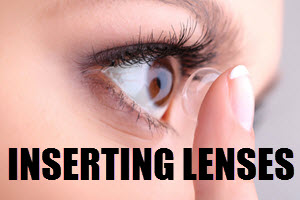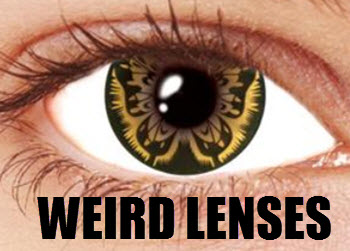Understanding Contact Lenses: Daily, Monthly, and Yearly Types
When you decide to start using contact lenses for vision correction, you will encounter several options to choose from, primarily categorized into three types: daily, monthly, and yearly lenses. Each of these types of contact lenses has unique properties and characteristics specifically designed to cater to distinct lifestyle needs and preferences. This comprehensive guide will explore these different types in detail, focusing on their distinct attributes, advantages, and possible drawbacks to assist in making an informed decision.
Daily Lenses
Daily contact lenses are specifically designed for single-day usage, meaning that each pair is meant to be worn for one day and then discarded. This eliminates the necessity for regular cleaning procedures as well as the use of storage solutions, thereby providing a level of convenience that is particularly appealing to individuals who are new to using contact lenses or who maintain busy, active lifestyles.
The single-use nature of daily lenses also makes them particularly attractive to hygiene-conscious users. Since a fresh pair is used each day, this greatly minimizes the risk of eye infections associated with protein and lipid deposits that can accrue on longer-wear lenses. The flexibility offered by daily lenses is advantageous for those who prefer to wear contact lenses occasionally, allowing them to use lenses only when necessary without the concern of exceeding the lens’s intended lifespan.
However, the high convenience factor associated with daily lenses also comes at a greater financial cost in the long run, owing to the need for regular replenishment. For those who plan to wear lenses every single day, the costs can add up quickly compared to other types of lenses. For more detailed insights about daily contact lenses, you may refer to reputable optical sources for further information.
Monthly Lenses
Monthly contact lenses are engineered to last approximately 30 days, and as such, they require a bit more maintenance than their daily counterparts. Each night, the lenses must be removed, cleansed thoroughly, and stored properly, demanding a greater level of commitment to eye care routines. These lenses are generally crafted from more robust materials, ensuring comfort and durability over several weeks.
For regular contact lens wearers, monthly lenses often emerge as a cost-effective choice. Despite necessitating consistent care and attention to prevent potential infections, the extended lifespan makes them more economical compared to daily lenses for frequent users, assuming adherence to prescribed cleaning and storage routines.
It’s critical for users opting for monthly lenses to maintain disciplined cleaning and storage habits to avoid complications such as eye infections or discomfort. For accurate guides and detailed maintenance advice, consulting professional sources such as the industry experts will prove beneficial.
Yearly Lenses
Yearly contact lenses, also known as conventional lenses, differ significantly from daily and monthly variants by offering longevity, lasting up to a full year with committed care and maintenance. These lenses are constructed from durable materials to withstand extended usage, however, they also demand stringent adherence to cleaning protocols.
Due to the robust construction and the need for meticulous hygiene practices, yearly lenses may primarily attract experienced lens users who are adept at managing the responsibilities associated with lens care. Despite having the potential to offer cost savings over a year, the immediate upfront cost tends to be higher than that of daily or monthly lenses. To minimize potential risks such as deposition buildup and infections, correctly following storage and cleaning routines is essential.
Not every individual’s eyes are suitable for the thickness and material composition of yearly lenses. It’s essential to seek advice from an eye care professional who can provide guidance tailored to individual eye health and preferences. Further readings and educational resources about yearly lenses can be accessed from expert resources.
Conclusion
Determining whether to opt for daily, monthly, or yearly lenses depends on a multitude of factors, including lifestyle choices, budget constraints, and personal preferences. Each type of contact lens offers its distinct benefits and potential disadvantages, underscoring the importance of receiving personalized advice from an eye care professional to cater to individual needs effectively. By thoroughly understanding these differences, contact lens users can select an option that ensures comfortable, safe, and effective vision correction tailored to their unique requirements.



 Cosmetic contact lenses
Cosmetic contact lenses